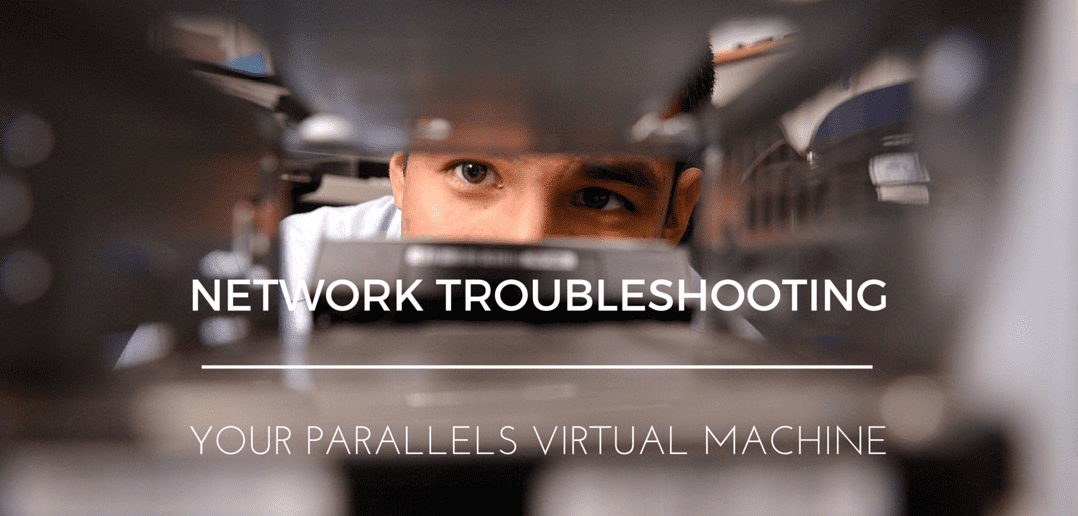
- Parallels for mac network adapter how to#
- Parallels for mac network adapter windows 10#
- Parallels for mac network adapter mac#
Parallels for mac network adapter mac#
In the MAC address field, you can change the MAC address currently assigned to the virtual machine.
Parallels for mac network adapter how to#
See Host-Only Network to learn how to configure this network type. Select this option to allow the virtual machine to connect to the host computer and the virtual machines residing on it and to make it invisible outside the host computer.

See Bridged Ethernet Network to learn how to configure this network type. You can choose the physical adapter where the virtual machine adapter will be bridged in the list below the Bridged Network option. In this case, the virtual machine is treated as a stand-alone computer on the network and should be configured in the same way as a real one. Select this option to allow the virtual machine to access the local network and Internet through one of the network adapters installed on the host computer. See Shared Network to learn how to configure this network type. In this case, your virtual machine will share whatever network connection is currently used by the host computer. Select this option to enable the Network Address Translation (NAT) feature for the virtual machine. You can choose one of the following network types for the virtual machine network adapter: Select the Connected option if you want the virtual machine to start up with this network adapter connected. For detailed information on how to add a device, refer to Adding and Removing Devices. Note: If this device is absent, you can add it to Virtual Machine Configuration.
Parallels for mac network adapter windows 10#
That's how I run Windows 10 - works wonderfully. I think your designer would be more efficient that way.Using the Network settings, you can change the network type used in your virtual machine. HOWEVER, a lot can be said about seamlessly moving back and forth between OSX and Windows (running in Parallels). Having said all that - I think if your policy is going to prevent the Mac from connecting to the network - the Boot Camp option is probably going to be the best bet. Personally - I love my Mac - I don't have the issues with it I have with my Windows laptop that I use for work.

It is not joined to the domain - and I don't access any file shares using it. Less prone - does not mean they can't get them. My connection is only used for Internet. I'm not sure why your policy is to not allow them to connect, but they are actually (IMHO) more stable - and could be less prone to malware and viruses (for now). My company does not use Macs for anything - however, I own one and connect to our network on occasion. That would mean, not allowing networking on the Mac would disconnect networking on the Windows vm. Well, my assumption and understanding is Parallels works like any other hosted virtual machine - it uses the underlying hardware for the actual connection and simulates hardware in the vm.

Put the Parallels network adapter in Bridged mode, it will connect normally.Īt this point you have now learned how to do some advanced support on Mac OS, so what's your reason for not allowing the Mac on the network again? Give it a static IP that isn't on your normal internal WAN, set the VLAN to something other than the default, point DNS and gateway to non-existant IP addresses. Give the Mac a static IP address, doesn't even have to be a real network. Traffic for Parallels should still flow (I think) but OS X traffic will get blocked.Ī simpler way without dealing with the firewall would be to black hole the Mac's DNS servers and Gateway. Set the Parallels network adapter to Bridged mode. Deny all outbound traffic on the interface. If you're really committed to your original plan, learn how to configure the OS X firewall from the command line. Or suck it up Wilder40, you're about to learn how to support a Mac on your network. If that's your organization's policy, and this is coming from a Mac fan who is a system administrator, tell the designer suck it up Buttercup, you're running Adobe Creative Cloud on a Windows computer. Wilder40 wrote:We cannot allow Apple Macs onto our network as they are not supported and we have no Apple knowledge - we can't ensure a secure network if we allow an OS to attach that we do not know or support.


 0 kommentar(er)
0 kommentar(er)
